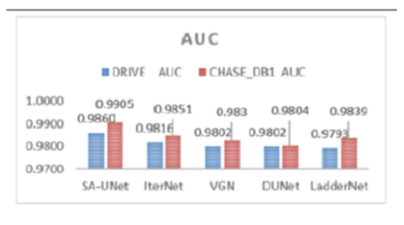


Indian Journal of Science and Technology
DOI: 10.17485/IJST/v14i43.1502
Year: 2021, Volume: 14, Issue: 43, Pages: 3246-3253
Original Article
S Sathiya Priya1*, J G R Sathiaseelan1
1Department of Computer Science, Bishop Heber College, Affiliated to Bharathidasan University, Trichy, Tamil Nadu, India
*Corresponding Author
Email: [email protected]
Received Date:12 August 2021, Accepted Date:22 October 2021, Published Date:21 December 2021
Objectives: To improve quality of images from video capture under normal illumination through SMART system and the best performance in the task of retina blood vessel segmentation with minimize segmentation loss and recover high resolution feature and makes it possible to evaluate high resolution image. Methods analysis: Existing research were showed for spontaneous segmentation of retina blood vessel from fundus images through supervised and unsupervised techniques. On the other hand, most of the research absence in segmentation robustness and cannot enhance loss functions so that results of the segmentation have made lots of fake. In our research, supervise the value of segmentation loss functions for a number of iterations and supports measure the accuracy of Super Resolution Generative Adversarial Network (SRGAN) method in training process using DRIVE dataset. Findings: We enhanced the AUC of 0.9943 %, Sensitivity of 0.8352 % and specificity of 0.9849 % using through SRGAN-UNet method. We additionally applied overlap tile technique for validation which made it conceivable to segment high resolution with overall precision 0.9736%. Novelty: Our proposed method to produce new-fangled, imitation occurrences of data that can pass for real data processing method that make high resolution images from experimental lower solution images based U-Net.
Keywords: Super Resolution Generative Adversarial Networks; Retina Blood Vessel Segmentation; UNet; overlaptile Technique; Glaucoma Disease; Sensitive Mirror Analyzer and Retina Tracker (SMART) system
© 2021 Sathiya Priya & Sathiaseelan. This is an open-access article distributed under the terms of the Creative Commons Attribution License, which permits unrestricted use, distribution, and reproduction in any medium, provided the original author and source are credited. Published By Indian Society for Education and Environment (iSee)
Subscribe now for latest articles and news.